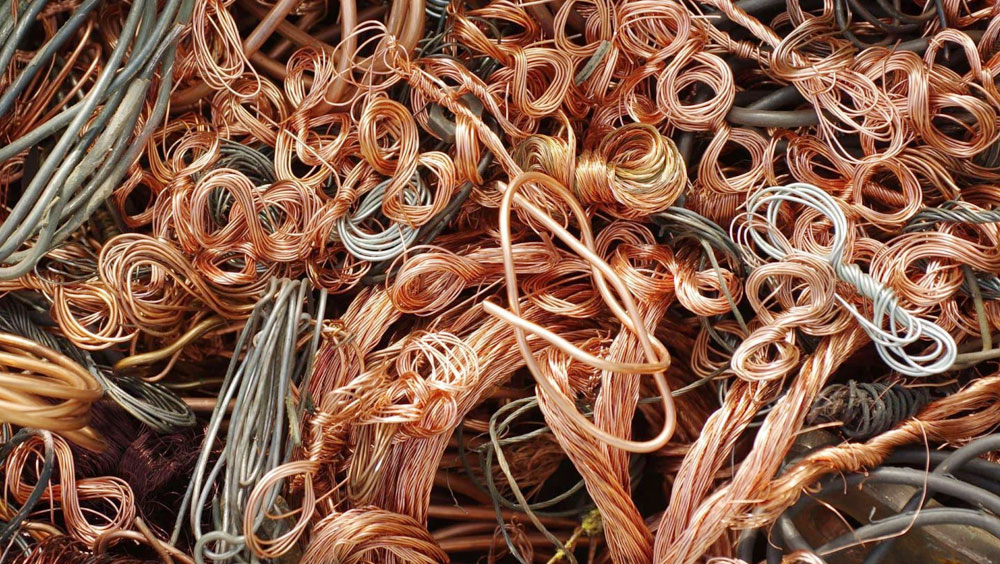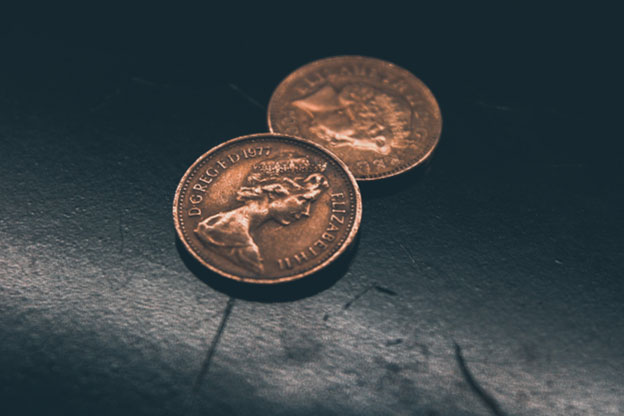
Investing in copper has gained popularity in recent years, particularly as the demand for copper in various industries and applications continues to increase. Copper is one of the most widely used industrial metals and is a key component in electrical wiring, plumbing, and electronics.

As such, the movement of copper prices and the health of the copper mining industry can have significant impacts on the larger economic landscape. In this article, we will explore the reasons for investing in copper, the current state of the market, and some strategies for effectively investing in copper. Whether you are a long-term investor or an average investor looking to diversify your portfolio, understanding the value and potential of investing in copper can provide valuable benefits for your financial goals.
The Recent Rise in Popularity
In recent years, investing in copper has become increasingly popular due to the metal’s widespread use in various industries and applications. In fact, the demand for copper has been steadily increasing since 2018, driven by factors such as global economic growth and increased production of electric vehicles. Additionally, technological advances such as 5G networks are expected to further increase the demand for copper in the coming years.
Why Invest in Copper?
Copper is one of the most important and valuable base metals in the world. Its unique properties, including high electrical and thermal conductivity, corrosion resistance, and malleability, make it a crucial component in many industries, from construction to electronics. Here are some reasons why investing in copper may be a wise decision:
1. Diverse range of uses: Copper has a wide range of uses, which makes it a valuable commodity. It is used in the construction industry for wiring, plumbing, and roofing, as well as in the electronics industry for wiring, motors, and transformers. Copper is also used in vehicles, solar panels, and many other products.
2. Limited supply: Despite its importance, copper is a finite resource, and its supply is limited. The extraction and production of copper can be a challenging and costly process, which makes it an attractive investment option for those looking for long-term returns.

3. Strong demand: The demand for copper is driven by economic growth and industrial expansion. As emerging markets continue to grow and develop, the demand for copper is likely to increase, contributing to its long-term value.
4. Comparison with other metals: While copper is often compared with other precious metals like gold and silver, it is important to note that copper is a base metal. Unlike gold and silver, the value of copper is primarily driven by industrial demand and economic growth, making it less prone to fluctuations based on investor sentiment.
5. Potential for price appreciation: Investors who are bullish on copper can benefit from potential price appreciation. In recent years, copper prices have been relatively low, but there is the potential for these prices to rise in the future as demand continues to grow and supply remains limited.
Profit Margin in Copper Investment
The profit margin in copper investment is impacted by the price of copper and the cost of production. If the cost of production is low, then investors can benefit from higher profits as the price of copper rises. The potential for profit increases when investors are able to buy and sell at a lower rate than what is offered in the market. Additionally, since copper prices are largely influenced by global economic growth and industrial production, investors can also benefit from price appreciation if the economy is in a period of growth and expansion.
Overall, investing in copper can be a smart choice for long-term investors who are willing to hold onto their investments and weather short-term market fluctuations. With its diverse range of uses, limited supply, and strong demand, copper is a valuable commodity that has the potential to provide attractive returns over time.
Ways to Invest in Copper
There are several ways to invest in copper, ranging from buying physical copper to trading futures and options. Here are three popular ways to invest in copper:
1. Buying physical copper: One of the simplest ways to invest in copper is by purchasing physical copper. This can be done by buying copper bars, rounds, or coins from a dealer. Investing in physical copper allows investors to have direct ownership of the commodity and can be particularly appealing for those who prefer tangible assets. However, it is worth noting that this method does require storage and security measures to protect the physical copper.
2. Investing in copper mining companies or ETFs: Another way to invest in copper is by investing in copper mining companies or copper ETFs (exchange-traded funds). Copper mining companies own and operate copper mines and are involved in the extraction and production of copper. Investing in a copper mining company provides exposure to the copper market and can potentially offer higher returns than investing in physical copper. Copper ETFs, on the other hand, provide investors exposure to copper prices by tracking the performance of a basket of copper-related investments. Copper ETFs can be a convenient way for investors to gain exposure to the copper market without the need to purchase and store physical copper.

3. Trading copper futures or options: For investors looking for a more speculative approach, trading copper futures or options can be an option. Copper futures allow investors to enter into a contract to buy or sell copper at a specific price and date in the future. Trading copper futures can be risky, as the value of the contract can fluctuate significantly based on supply and demand factors. Copper options, on the other hand, provide investors with the right, but not the obligation, to buy or sell copper at a specific price on or before a specific date in the future. Trading copper options can enable investors to take advantage of price movements in the copper market while potentially limiting the amount of risk taken on.
How to Choose the Best Method
When it comes to investing in copper, there is no one-size-fits-all method. Different investment strategies carry different levels of risk and potential return, so investors should consider their individual needs and preferences before deciding which approach is best for them. Here are some key factors to consider when choosing the best method for investing in copper:
1. Risk Tolerance: Investors should consider their risk tolerance before deciding which approach to take. Buying physical copper, for example, carries a much lower level of risk than trading copper futures or options.
2. Time Horizon: The time horizon of an investment will also have an impact on the best method to choose. Longer-term investments may be better suited for investing in copper mining companies or ETFs, while short-
3. Diversification: Investing in copper can be a good way to diversify an investment portfolio, as it is uncorrelated to other asset classes and provides exposure to the industrial sector. However, investors should consider their overall diversification objectives when deciding which method is best for them.
4. Investment Costs: Depending on the method chosen, investing in copper may incur costs such as transaction fees and storage costs. Investors should factor these into their decision-making process.
No matter which approach an investor takes, it is important to assess one's own risk tolerance and investment goals before investing in copper. Copper can be a volatile commodity, and investors should carefully consider their investment options and goals before making any decisions.
Risks and Benefits of Investing in Copper
Investing in copper can provide various benefits, but it also comes with its own set of risks. Here are some of the potential risks and benefits associated with investing in copper.
Benefits of investing in copper:
1. Hedge against inflation: Copper has traditionally been used as a hedge against inflation. As inflationary pressure rises, the cost of goods and services also increases, which can lead to higher demand for copper. Therefore, investing in copper can provide a potential safeguard against inflation.
2. Diversification: Investing in copper can diversify an investor's portfolio. Copper is not correlated with stocks and bonds, which means that investing in copper can potentially lower portfolio volatility and minimize risk.
3. Industrial demand: Copper is used extensively in various industries, such as construction, electrical wiring, and electronics, making it an essential commodity for economic growth. As industrial demand for copper increases, its price can also rise, which can benefit investors.
4. High growth potential: As the global economy grows, so does the demand for copper. In recent years, there has been an increase in copper demand, particularly from emerging markets. This growth potential can provide investors the opportunity to potentially profit as copper prices rise.

Risks of investing in copper:
1. Economic conditions: Copper prices are heavily influenced by economic conditions. Economic growth, inflation, and interest rates are key factors that can have a significant impact on copper prices. Therefore, an economic slowdown or recession can lead to a decrease in copper demand, which can negatively affect copper prices.
2. Supply chain disruptions: Copper is mined in various locations worldwide, which makes it vulnerable to supply chain disruptions caused by natural disasters, political instability, and labor disputes. Such disruptions can lead to a decrease in copper supply, which can result in an increase in copper prices and negatively impact investors.
3. Fluctuating demand: Copper prices can be affected by changes in demand for copper, which can be volatile and unpredictable. Changes in building and construction activity, technological advancements, and manufacturing trends can all affect copper demand, which can have a significant impact on copper prices.
4. Commodity risk: Copper is a commodity, which means its price is exposed to fluctuations in commodity markets. The copper market can be influenced by numerous factors such as speculation, currency fluctuations, and geopolitical events, which can lead to price volatility.
So, investing in copper can provide significant benefits but also comes with its own set of risks. It is essential for investors to carefully consider these risks and market factors and maintain a diversified portfolio in order to minimize risks and potentially maximize returns.
Conclusion
Investing in copper can be a potentially lucrative endeavor, but it is important to carefully evaluate one's own risk tolerance and investment goals before making any decisions. Copper is a commodity that is heavily influenced by economic conditions, supply chain disruptions, and changes in demand, which can all have an impact on its price. Investors should take the time to understand the risks associated with investing in copper and maintain a diversified portfolio to ensure that their investments are balanced and in line with their goals.
Frequently Asked Questions:
Is copper a good investment for beginners?
Copper can be a good investment for beginners who are looking to diversify their portfolios. However, it is important to understand the risks and volatility associated with investing in copper. As with any investment, it is recommended that beginners do thorough research and seek advice from a financial professional before investing in copper.
The success for beginners also depends on the type of copper investment they choose. For example, ETFs and mutual funds that invest in copper can be a more suitable option for those inexperienced investors who want to benefit from the potential gains of investing in copper without exposing themselves to excessive risk.
How do I buy physical copper?
You can buy physical copper in the form of copper bars or rounds from precious metal dealers. It is important to note that buying physical copper can come with storage and security costs, as well as potential transportation costs when buying or selling the metal.
Can I invest in copper through my IRA or 401(k)?
Yes, you can invest in copper through your Individual Retirement Account (IRA) or 401(k). However, not all retirement account providers may offer copper as an investment option. It is recommended that you check with your provider or financial advisor to see if copper is an available investment option for your retirement account.
